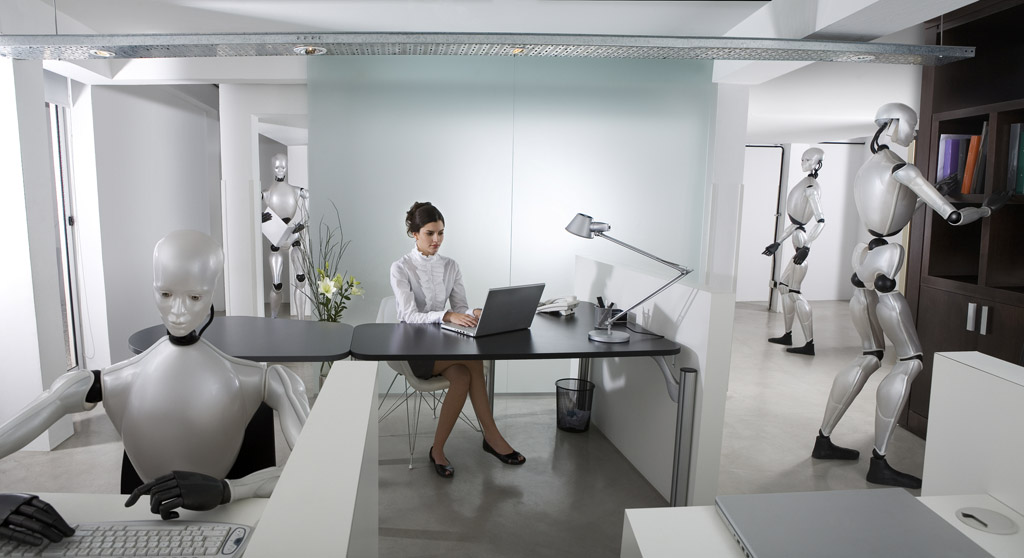2.1 ICT in the workplace
The components of a computerised information system are hardware, software, people, procedures and data. In this section we are looking at the people, the users of the system.
Digital information system users are those who use the technology in the course of their work or general day-to-day activities. Providers enable the technology to be used by developing and implementing it. There are various groups of users of technology. The users are affected by the use of technology to either their advantage or disadvantage or both. For example, an office worker’s job is improved by the use of a word processor. The task of typing letters is now much quicker and errors or changes are easy to fix compared to the days of a typewriter. However, to their disadvantage is the fact that fewer office staff are now needed for typing so there is the possibility of loss of employment. Change in any situation will have an effect on people involved.

There are many issues and effects associated with technological developments. An issue arises when two sides have conflicting opinions about the use of the technology. Issues generally only arise when the use of a piece of technology is negative for some reason – the group of users who are subject to the negative effects will argue with the group that stands to benefit from the use of the technology.
Common effects associated with the use of computer technology are the resulting unemployment, alienation, crime, loss of privacy and errors. But on the bright side, convenience, efficiency, employment and improved equal opportunity have also resulted from the use of computer technology.
The social effect of new technology relates to how the technology affects society as a whole in terms of employment, environment, advancement and generally improving quality of life. Technology should ideally contribute to a state of social sustainability. However, social, or ethical issues arise when a group of users will be unfairly disadvantaged by the use of the technology. For example, the loss of jobs when a process previously carried out by people (e.g. tram conductors) is replaced by machines (e.g. automatic ticketing machines and the Myki system in Melbourne), loss of human interaction, increased difficulties for the disabled, fare structures that disadvantage certain groups depending on the state.
Social and ethical practice in IT exercise 1
User groups
Below is a list of users and a jumbled list of technologies. Match the user group with the technology.

| User | Technology |
|---|---|
| Accountants | Personal computer |
| Graphic artists | Online learning |
| Commuters | Use plotters to draw plans and other technical drawings |
| Students | Accounting software |
| Office workers | Graphic art programs to create layouts for artwork and webpages |
| Assembly-line workers | Synthesising software to create music |
| Musicians | Metcard |
| Draughtsmen | Robotics |
Computer technology has had a large impact on the way we live and work. Many jobs have been replaced or changed substantially due to the introduction of computer technology. A computer can completely replace a worker when all the tasks the worker used to perform can now be performed by a computer. For example, in cutting cloth for garments a computer can be used to lay out the pattern then cut the material ready for sewing. The material cutter’s job is replaced by a computer. The designer who makes up the pattern pieces is still required to design the garment and create the pattern; however, their job has changed because graphical applications can now help in the production of patterns, making the designer’s job easier. So some jobs are replaced while others are changed.
In January 2016, the World Economic Forum released a report warning that the rise of robots will lead to a net loss of over five million jobs in 15 major developed and emerging economies by 2020. In 2015, Professor Stephen Hawking and other academics signed an open letter warning against the rise of artificial intelligence.- 1 Explain how this article makes you feel.
2 Identify the most dramatic quote in the article.
3 List two points for and two points against the rise of AI listed in the article.
4 In a few sentences, write a statement outlining your position concerning the development of AI, answering this question: ‘Should scientists be limited in their development of AI or allowed to do as they please?’
